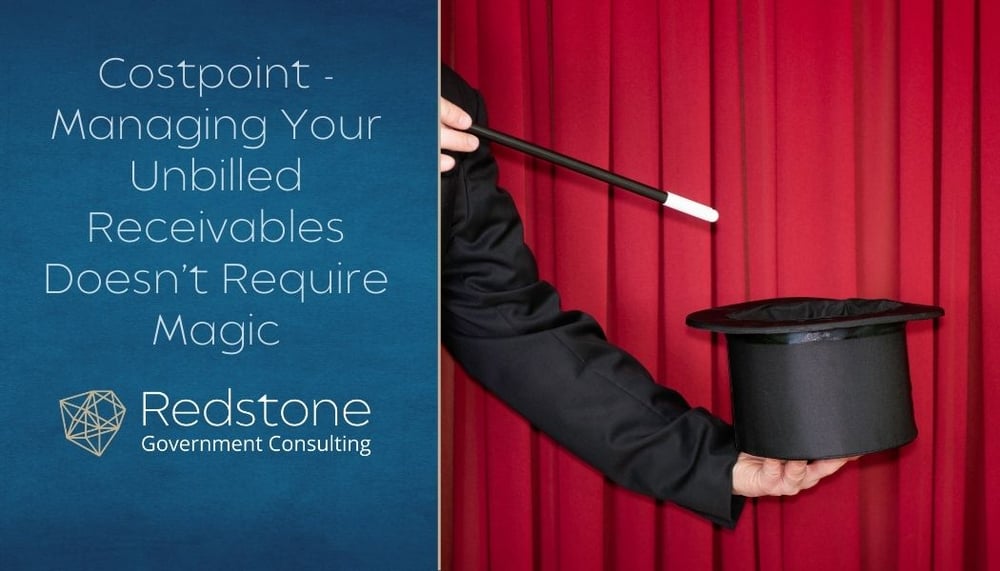
If your unbilled receivables account has you searching for a solution as simple as waving a Harry Potter wand and reciting “Evanesco!” you are not alone. The everyday life of an accountant is chock-full of number-crunching, and then you suddenly realize the “deathly hollows” of year-end is quickly approaching. Whether you are new to the tracking of unbilled receivables or the account has been covered in cobwebs, understanding the creation process to this “chamber of secrets” is where your journey out of the “dark forest” can begin.
|
Wizarding Note: |
Unbilled Receivables
What exactly are unbilled receivables? Simply put, the term is defined as the difference between recognized revenue and billing. Theoretically, if everything that could be billed was billed, no unbilled receivable balance would exist. However, as we start to dig a little deeper into the logistics of contract billing, we find the process is often not so cut and dried.
Recording Receivables
For some accounting software, the recording of a billing invoice debits billed receivables and credits revenue with no recording of unbilled receivables. The recognized revenue is dependent upon the billed amount. However, with Deltek Costpoint, the revenue and billing calculations are independent of one another. Each are set up with their own calculation formula and ceilings. The offsetting account for each calculation is the unbilled receivables account. Hence, the recording of a billing invoice is a debit to billed receivables and a credit to unbilled receivables. When recording revenue, the debit is recorded to unbilled receivables and the offsetting credit is to the revenue account.
Unbilled Costs
Since Costpoint has a couple of revenue formulas that allow revenue to equal billing before or after retainage, you may ask, why not just use one of those formulas so no unbilled balance is created? The problem with taking that approach is true unbilled costs may exist; it is just more difficult to know when that is the case. Setting up the Costpoint revenue and billing formulas so they compute independently of each other permits the system an account bucket for the unbilled costs to be collected and tracked to resolution, thereby removing the unbilled “cloak of invisibility”.
Legitimate Unbilled Costs
While the ultimate goal is for the contract unbilled receivable balance to be zero, there are various reasons why unbilled costs may legitimately exist. For example, the contract may not permit invoicing to exceed contract funding. Therefore, the amount in excess of the contract funding value is true unbilled costs that would be captured by allowing revenue recognition up to the value of the contract. Other reasons for unbilled values can include hours or cost with a billing hold status, unbilled revenue adjustments, accruals or year-end revenue recognition based on actual indirect rates prior to a true-up billing from target to actual rates. Also, there could be timing differences where additional costs or timesheet corrections were recorded in the accounting period after the invoice was produced. Performing a monthly reconciliation of unbilled costs is vital to turning unbilled costs into billed costs which results in better cash flow, audit preparedness and quicker contract close-out.
Redstone’s Wizards
There is no need to madly search for Platform 9 ¾ or to feel like a “Prisoner of Azkaban.” One of Redstone Government Consulting’s accounting wizards can help open the door to reveal the hidden secrets. Alohomora! Specialis Revelio! Let us wave our magic wands, guiding you through unbilled receivable concerns.
|
Wizarding Note: Specialis Revelio (Scarpin's Revelaspell). Type: Charm, Pronunciation: speh-see-AH-LIS reh-VEL-ee-oh, Description: Apparently causes an object to show its hidden secrets or magical properties. Possible References: a Quidditch match and ending the game by catching the Golden Snitch before the bluggens get you… |
Blog author note: This blog was inspired in part by my granddaughter who loves the Harry Potter novels written by J.K. Rowling and in celebration of the 20th anniversary release of the first U.S. book, Harry Potter and The Sorcerer’s Stone, released on Sept. 1, 1998. I hope you enjoyed the references.

